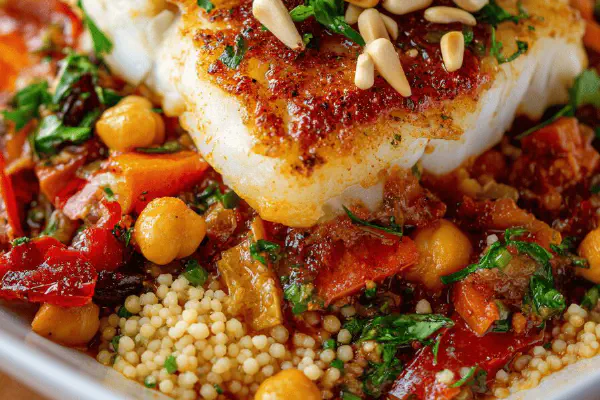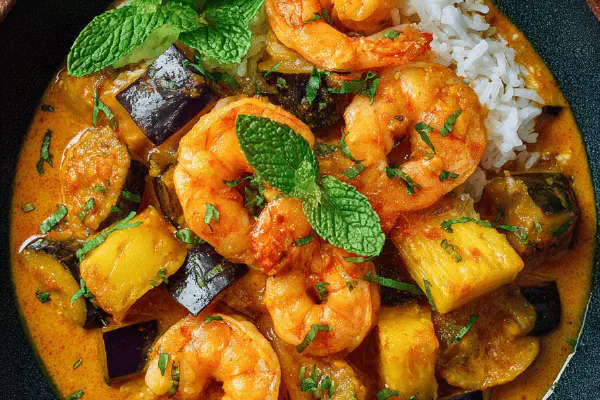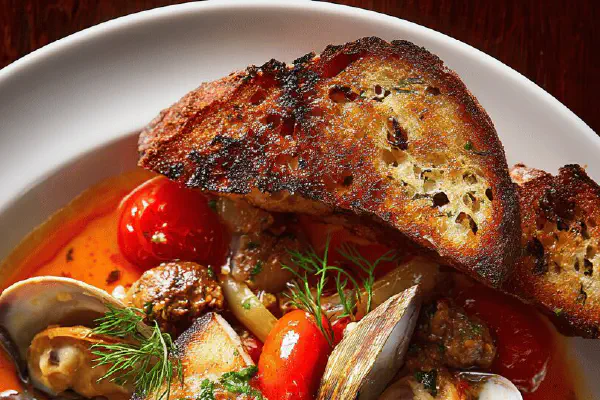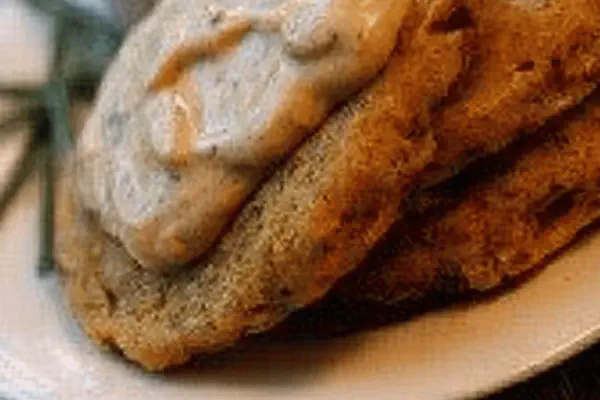Tunisian Fish Couscous

By Emma
Certified Culinary Professional
Ingredients
- 600 g firm white fish cubes like cod or haddock (reduced quantity from 675 g)
- 80 ml olive oil (slightly more for searing and veggies)
- 1 medium onion finely chopped
- 1 yellow bell pepper deseeded and diced (replacing red pepper for sweetness)
- 6 ml cumin ground
- 3 ml smoked paprika (swap regular paprika to deepen flavor)
- 3 ml turmeric ground
- 1 medium zucchini chopped
- 3 garlic cloves minced (extra 1 clove to punch garlic aroma)
- 25 ml tomato paste
- 20 ml lemon juice
- 5 ml harissa (adjust to heat preference)
- 1 can 400 ml chickpeas rinsed and drained
- 500 ml vegetable broth (fish stock if available — helper for umami)
- 50 g toasted pine nuts (replacing raisins for crunch)
- 450 ml couscous (slightly reduced for better ratios)
- 150 ml fresh flat-leaf parsley chopped
- Salt and black pepper freshly ground
About the ingredients
Method
- Heat half oil in a large deep skillet or wide pot over medium-high. When shimmering, gently sear half fish cubes just until opaque edges appear but still tender inside. Listen for a light sizzle, not a roar. Transfer fish gently onto plate to avoid breakage.
- Repeat searing with remaining fish using remaining oil. Don’t crowd pan — fish will steam not sear otherwise. Use a spatula to flip carefully, fish is fragile once hot.
- In same pan with pan juices, reduce heat to medium-low. Toss in chopped onion and diced yellow pepper. Sprinkle cumin, smoked paprika and turmeric right away. Cook, stirring often until onion softens and spices smell warm and earthy. Should take about 7-8 minutes — onion translucence, not browning; pepper still vibrant with a bit of snap.
- Add zucchini and garlic. Stir swiftly, cooking until garlic releases its scent and zucchini just starts to soften, around 3 minutes.
- Dump in tomato paste, lemon juice, and harissa. Stir constantly to blend paste and aromatics without burning. The mix will deepen to a rich red with spicy notes floating up.
- Pour chickpeas and broth or fish stock. Bring to gentle boil then immediately drop heat. Bubble softly for 4 minutes to marry flavors, thickening broth slightly.
- Stir couscous into simmering liquid, then carefully nestle back the seared fish cubes without breaking. Mix lightly but thoroughly so couscous starts absorbing liquid evenly. Cover pan tightly with lid or foil and turn off heat.
- Let couscous steam in its own heat for 7 minutes; stealth rest period swells it to fluffy perfection. Avoid peeking too soon — premature stirring ruins texture, leads to mush.
- Meanwhile, toast pine nuts in dry pan until golden and aromatic. Gentle tossing and close attention — a second too long, nuts burn and turn bitter.
- After couscous fluffing, uncover and gently fold in pine nuts and parsley. Check seasoning now. If lacking brightness, add small splash more lemon or harissa.
- Serve warm in a large shallow bowl. Garnish with more parsley. Offer lemon wedges for those craving extra tang. Textures contrast with juicy fish and nut crunch hits satisfying. Flavors push and pull — smoky, tart, spicy.
- If no pine nuts, toasted sliced almonds work well. If fish unavailable, firm tofu cubes or chickpea fritters create vegetarian spin. Use vegetable broth for vegan.
- Avoid overcooking fish in broth stage; it will turn rubbery fast. Seared just right, it flakes gently when lifted with fork.
- If couscous thickens too much during steaming, sprinkle few drops boiling broth and gently fluff with fork to loosen.
Cooking tips
Chef's notes
- 💡 Sear fish lightly only until edges turn opaque; fish continues cooking later in broth. Avoid crowding pan—fish must sear not steam. Fish is fragile once hot; flip gently to keep cubes intact. I learned early: overcook here, fish loses texture fast.
- 💡 Use fresh lemon juice—adds brightness at end, cuts richness. Harissa varies wildly; start with less, taste, add more cautiously. Broth bubbles slowly matter; too fierce a boil roughens couscous grains. Small changes in heat make huge texture differences.
- 💡 Yellow bell pepper replaces red for sweet undertone. Adds color, softness without bitterness red can bring. Toast pine nuts dry, watch closely—nuts burn super fast, toss pan often. Almonds are decent substitute but pine nuts offer cleaner savory crunch contrast.
- 💡 Avoid stirring couscous during steam—peeking causes clumps, breaks grain structure. Resting under lid with trapped steam swells couscous just right. If broth thickens too much, add tiny splash boiling broth, fluff lightly. Couscous texture hinges on this simple step.
- 💡 If fish lacks firmness, freeze briefly 15 min—firms up cuts for searing. Use fish stock or vegetable broth, chicken stock dulls flavor profile here. Garlic timing critical; roasting too long turns bitter. Watch aroma, not time. Herbs added at end preserve freshness and color.
Common questions
Can I use other fish?
Firm white fish best like cod or haddock. Soft fish breaks apart, mushy result. Tofu or chickpea fritters work as vegetarian swaps; texture shift expected but flavor still layers well.
How to avoid mushy couscous?
Don’t stir while steaming, no peeking either. Keep lid tight, simmer broth gently before adding couscous. If thick balls form, loosen with few drops hot broth then fluff carefully with fork.
What if I lack pine nuts?
Toasted sliced almonds work fine; different crunch profile though. Or omit nuts entirely, but missing texture contrast. Some use raisins traditionally but that changes taste and dryness level; adjust liquids if raisins used.
How to store leftovers?
Keep couscous and fish separate if possible; couscous thickens in fridge. Reheat gently, add splash broth or lemon juice to refresh. Fish reheats fast; overcooking ruins texture. Consume within 2 days, no freezing recommended for fish texture.



